Yuning Zhang
EdgeLoRA: An Efficient Multi-Tenant LLM Serving System on Edge Devices
Jul 02, 2025Abstract:Large Language Models (LLMs) have gained significant attention due to their versatility across a wide array of applications. Fine-tuning LLMs with parameter-efficient adapters, such as Low-Rank Adaptation (LoRA), enables these models to efficiently adapt to downstream tasks without extensive retraining. Deploying fine-tuned LLMs on multi-tenant edge devices offers substantial benefits, such as reduced latency, enhanced privacy, and personalized responses. However, serving LLMs efficiently on resource-constrained edge devices presents critical challenges, including the complexity of adapter selection for different tasks and memory overhead from frequent adapter swapping. Moreover, given the multiple requests in multi-tenant settings, processing requests sequentially results in underutilization of computational resources and increased latency. This paper introduces EdgeLoRA, an efficient system for serving LLMs on edge devices in multi-tenant environments. EdgeLoRA incorporates three key innovations: (1) an adaptive adapter selection mechanism to streamline the adapter configuration process; (2) heterogeneous memory management, leveraging intelligent adapter caching and pooling to mitigate memory operation overhead; and (3) batch LoRA inference, enabling efficient batch processing to significantly reduce computational latency. Comprehensive evaluations using the Llama3.1-8B model demonstrate that EdgeLoRA significantly outperforms the status quo (i.e., llama.cpp) in terms of both latency and throughput. The results demonstrate that EdgeLoRA can achieve up to a 4 times boost in throughput. Even more impressively, it can serve several orders of magnitude more adapters simultaneously. These results highlight EdgeLoRA's potential to transform edge deployment of LLMs in multi-tenant scenarios, offering a scalable and efficient solution for resource-constrained environments.
Controllable 3D Outdoor Scene Generation via Scene Graphs
Mar 10, 2025Abstract:Three-dimensional scene generation is crucial in computer vision, with applications spanning autonomous driving, gaming and the metaverse. Current methods either lack user control or rely on imprecise, non-intuitive conditions. In this work, we propose a method that uses, scene graphs, an accessible, user friendly control format to generate outdoor 3D scenes. We develop an interactive system that transforms a sparse scene graph into a dense BEV (Bird's Eye View) Embedding Map, which guides a conditional diffusion model to generate 3D scenes that match the scene graph description. During inference, users can easily create or modify scene graphs to generate large-scale outdoor scenes. We create a large-scale dataset with paired scene graphs and 3D semantic scenes to train the BEV embedding and diffusion models. Experimental results show that our approach consistently produces high-quality 3D urban scenes closely aligned with the input scene graphs. To the best of our knowledge, this is the first approach to generate 3D outdoor scenes conditioned on scene graphs.
Cell-free massive MIMO Channels in an Urban Environment -- Measurements and Channel Statistics
Jun 03, 2024
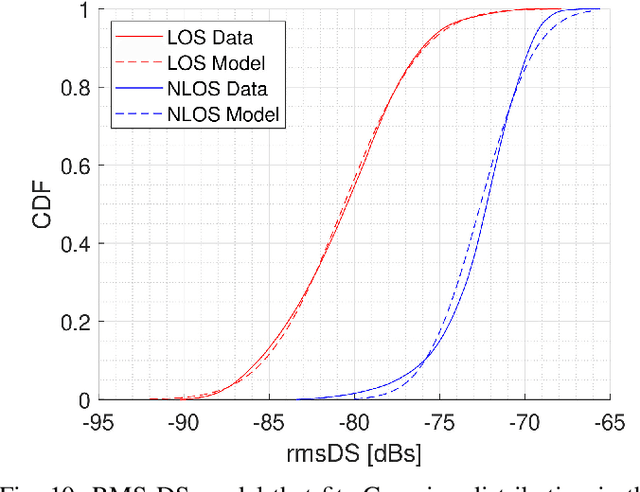
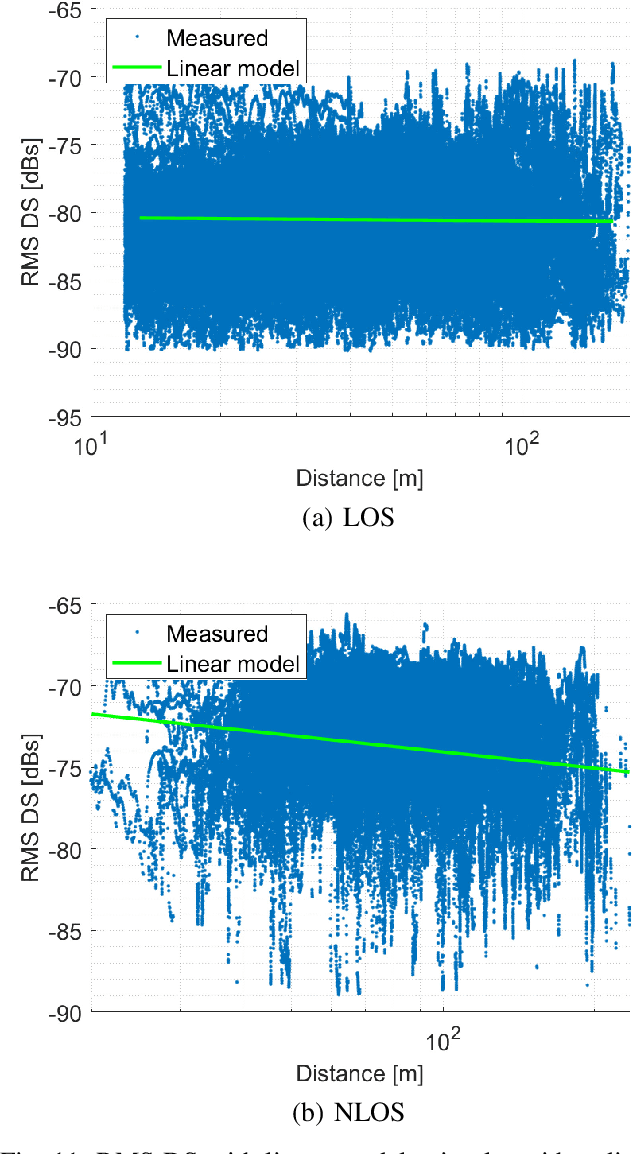
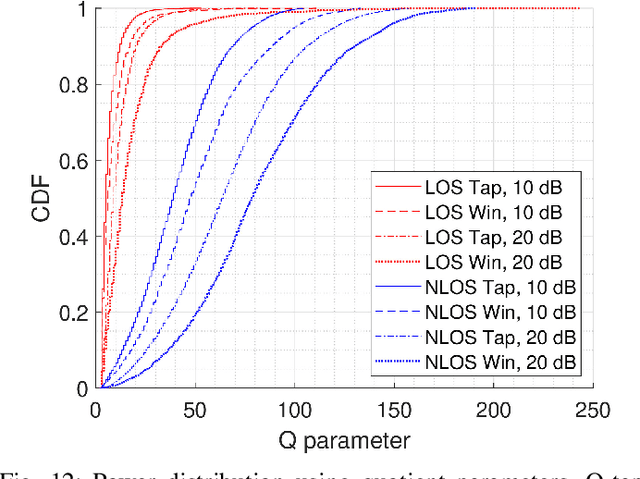
Abstract:Cell-free massive MIMO (CF-mMIMO), where each user equipment (UE) is connected to multiple access points (APs), is emerging as an important component for 5G and 6G cellular systems. Accurate channel models based on measurements are required to optimize their design and deployment. This paper presents an extensive measurement campaign for CF-mMIMO in an urban environment. A new "virtual AP" technique measures channels between 80 UE locations and more than 20,000 possible microcellular AP locations. Measurements are done at 3.5 GHz carrier frequency with 350 MHz bandwidth (BW). The paper describes the measurement setup and data processing, shows sample results and their physical interpretation, and provides statistics for key quantities such as pathloss, shadowing, delay spread (DS), and delay window. We find pathloss coefficients of 2.9 and 10.4 for line-of-sight (LOS) and non line-of-sight (NLOS), respectively, where the high LOS coefficient is mainly because larger distance leads to more grazing angle of incidence and thus lower antenna gain in our setup. Shadowing standard deviations are 5.1/16.6 dB, and root mean squared (RMS) DSs of -80.6/-72.6 dBs. The measurements can also be used for parameterizing a CUNEC-type model, which will be reported in future work.
Large-scale Outdoor Cell-free mMIMO Channel Measurement in an Urban Scenario at 3.5 GHz
May 31, 2024Abstract:The design of cell-free massive MIMO (CF-mMIMO) systems requires accurate, measurement-based channel models. This paper provides the first results from the by far most extensive outdoor measurement campaign for CF-mMIMO channels in an urban environment. We measured impulse responses between over 20,000 potential access point (AP) locations and 80 user equipments (UEs) at 3.5 GHz with 350 MHz bandwidth (BW). Measurements use a "virtual array" approach at the AP and a hybrid switched/virtual approach at the UE. This paper describes the sounder design, measurement environment, data processing, and sample results, particularly the evolution of the power-delay profiles (PDPs) as a function of the AP locations, and its relation to the propagation environment.
Merging Vision Transformers from Different Tasks and Domains
Dec 25, 2023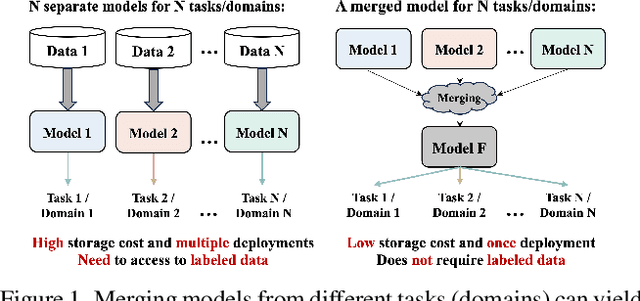
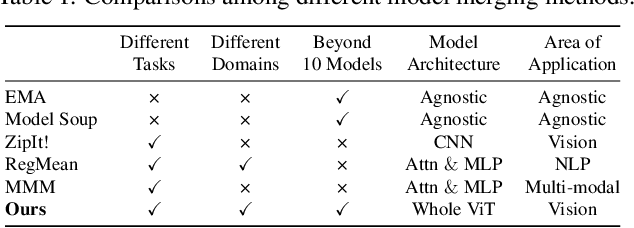
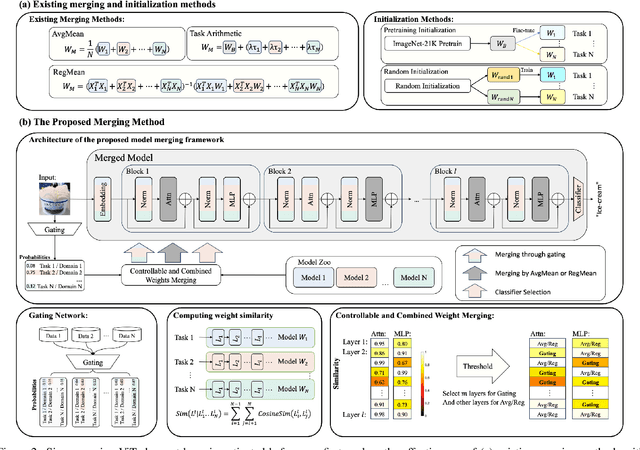

Abstract:This work targets to merge various Vision Transformers (ViTs) trained on different tasks (i.e., datasets with different object categories) or domains (i.e., datasets with the same categories but different environments) into one unified model, yielding still good performance on each task or domain. Previous model merging works focus on either CNNs or NLP models, leaving the ViTs merging research untouched. To fill this gap, we first explore and find that existing model merging methods cannot well handle the merging of the whole ViT models and still have improvement space. To enable the merging of the whole ViT, we propose a simple-but-effective gating network that can both merge all kinds of layers (e.g., Embedding, Norm, Attention, and MLP) and select the suitable classifier. Specifically, the gating network is trained by unlabeled datasets from all the tasks (domains), and predicts the probability of which task (domain) the input belongs to for merging the models during inference. To further boost the performance of the merged model, especially when the difficulty of merging tasks increases, we design a novel metric of model weight similarity, and utilize it to realize controllable and combined weight merging. Comprehensive experiments on kinds of newly established benchmarks, validate the superiority of the proposed ViT merging framework for different tasks and domains. Our method can even merge beyond 10 ViT models from different vision tasks with a negligible effect on the performance of each task.
Uncovering multifunctional mechano-intelligence in and through phononic metastructures harnessing physical reservoir computing
May 30, 2023Abstract:The recent advances in autonomous systems have prompted a strong demand for the next generation of adaptive structures and materials to possess more built-in intelligence in their mechanical domain, the so-called mechano-intelligence (MI). Previous MI attempts mainly focused on specific designs and case studies to realize limited aspects of MI, and there is a lack of a systematic foundation in constructing and integrating the different elements of intelligence in an effective and efficient manner. Here, we propose a new approach to create the needed foundation in realizing integrated multifunctional MI via a physical reservoir computing (PRC) framework. That is, to concurrently embody computing power and the various elements of intelligence, namely perception, decision-making, and commanding, directly in the mechanical domain, advancing from conventional adaptive structures that rely solely on add-on digital computers and massive electronics to achieve intelligence. As an exemplar platform, we construct a mechanically intelligent phononic metastructure with the integrated elements of MI by harnessing the PRC power hidden in their high-degree-of-freedom nonlinear dynamics. Through analyses and experimental investigations, we uncover multiple adaptive structural functions ranging from self-tuning wave controls to wave-based logic gates. This research will provide the basis for creating future new structures that would greatly surpass the state of the art - such as lower power consumption, more direct interactions, and much better survivability in harsh environment or under cyberattacks. Moreover, it will enable the addition of new functions and autonomy to systems without overburdening the onboard computers.
A Framework for Developing Algorithms for Estimating Propagation Parameters from Measurements
Sep 13, 2021
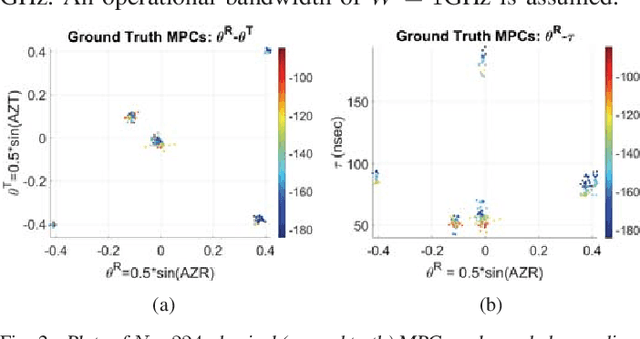
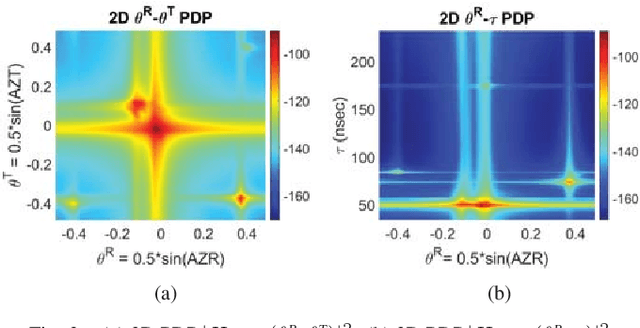
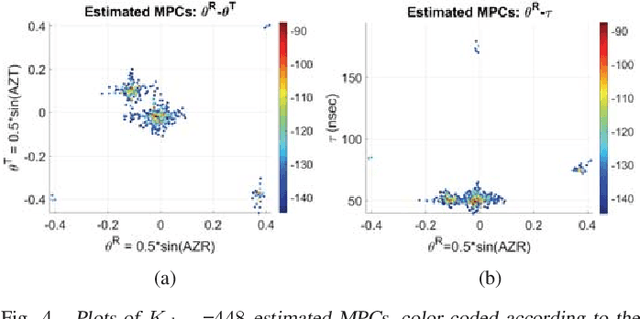
Abstract:A framework is proposed for developing and evaluating algorithms for extracting multipath propagation components (MPCs) from measurements collected by sounders at millimeter-wave (mmW) frequencies. To focus on algorithmic performance, an idealized model is proposed for the spatial frequency response of the propagation environment measured by a sounder. The input to the sounder model is a pre-determined set of MPC parameters that serve as the "ground truth." A three-dimensional angle-delay (beamspace) representation of the measured spatial frequency response serves as a natural domain for implementing and analyzing MPC extraction algorithms. Metrics for quantifying the error in estimated MPC parameters are introduced. Initial results are presented for a greedy matching pursuit algorithm that performs a least-squares (LS) reconstruction of the MPC path gains within the iterations. The results indicate that the simple greedy-LS algorithm has the ability to extract MPCs over a large dynamic range, and suggest several avenues for further performance improvement through extensions of the greedy-LS algorithm as well as by incorporating features of other algorithms, such as SAGE and RIMAX.
Unsupervised Motion Artifact Detection in Wrist-Measured Electrodermal Activity Data
Jul 26, 2017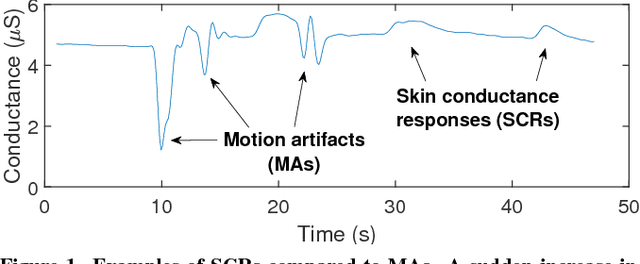

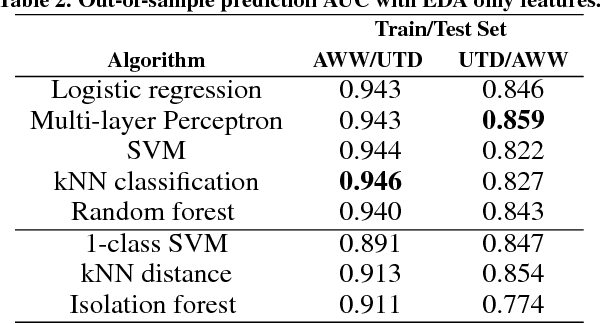

Abstract:One of the main benefits of a wrist-worn computer is its ability to collect a variety of physiological data in a minimally intrusive manner. Among these data, electrodermal activity (EDA) is readily collected and provides a window into a person's emotional and sympathetic responses. EDA data collected using a wearable wristband are easily influenced by motion artifacts (MAs) that may significantly distort the data and degrade the quality of analyses performed on the data if not identified and removed. Prior work has demonstrated that MAs can be successfully detected using supervised machine learning algorithms on a small data set collected in a lab setting. In this paper, we demonstrate that unsupervised learning algorithms perform competitively with supervised algorithms for detecting MAs on EDA data collected in both a lab-based setting and a real-world setting comprising about 23 hours of data. We also find, somewhat surprisingly, that incorporating accelerometer data as well as EDA improves detection accuracy only slightly for supervised algorithms and significantly degrades the accuracy of unsupervised algorithms.
 Add to Chrome
Add to Chrome Add to Firefox
Add to Firefox Add to Edge
Add to Edge